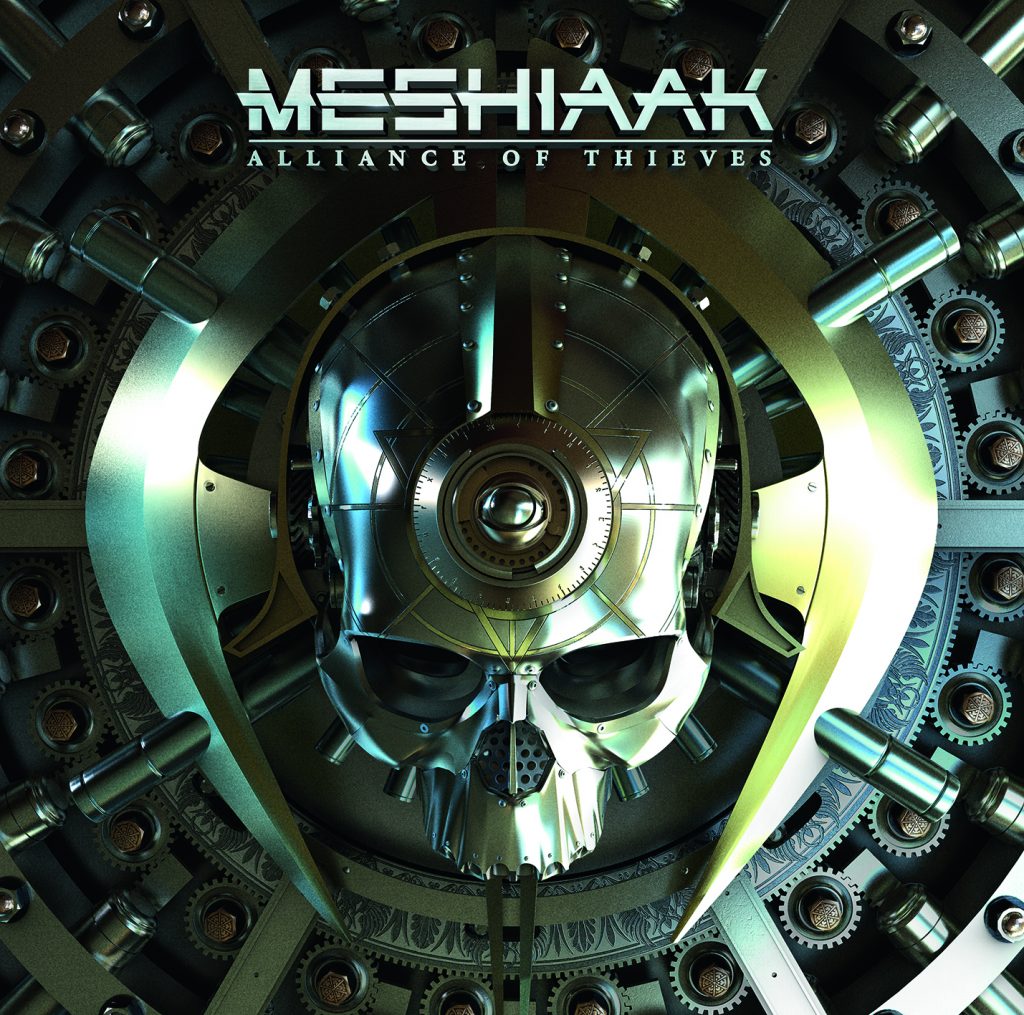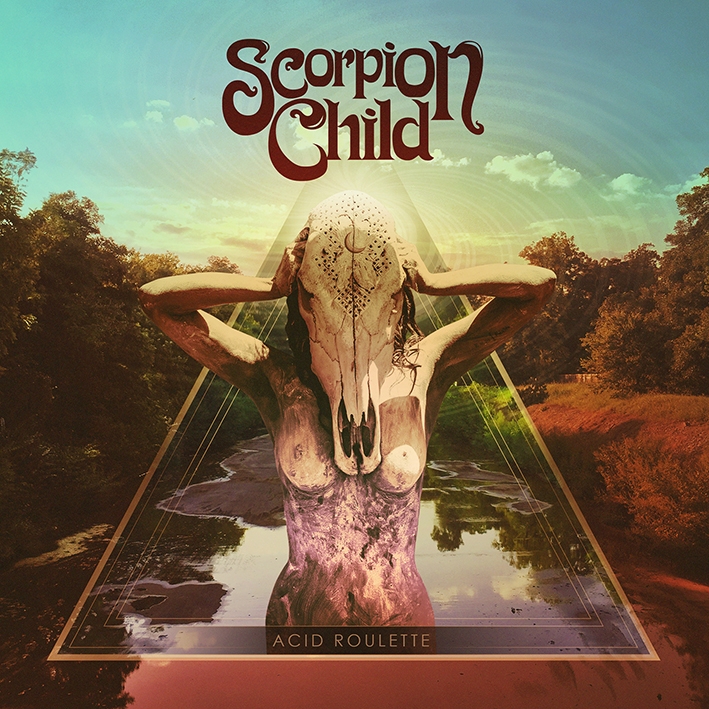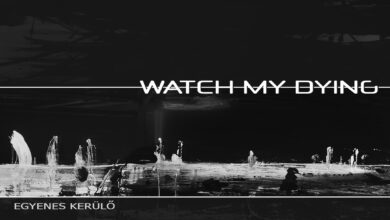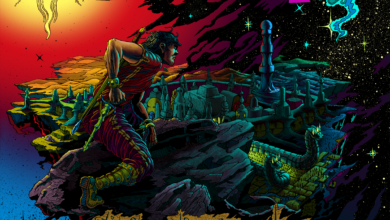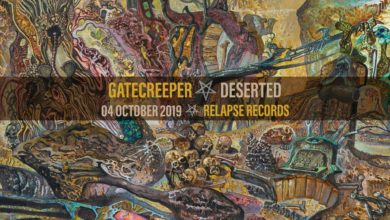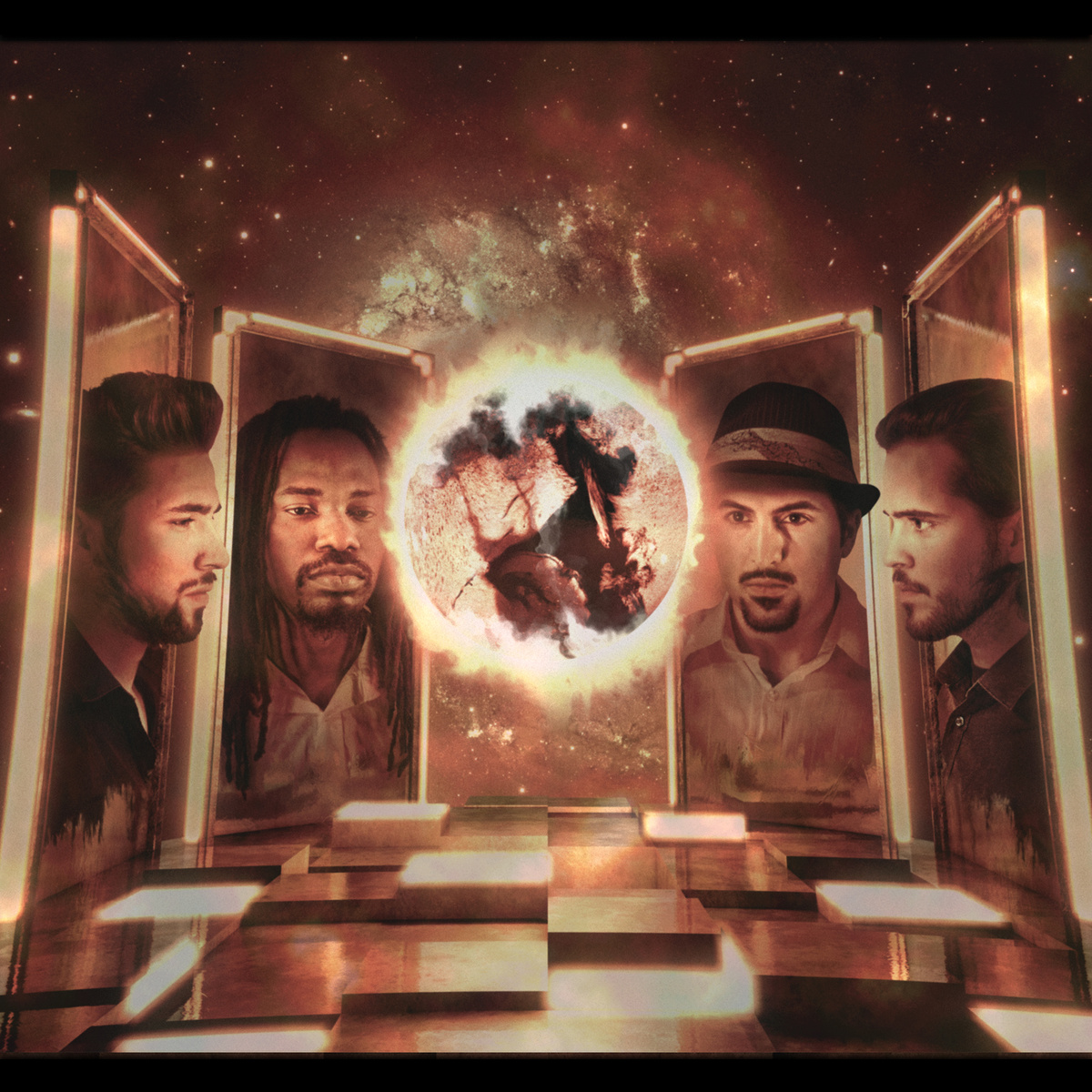Initially bonded in 2014 by the desire to combine styles, Melbourne, Australia’s Meshiaak is poised to present something much larger than expected. That notion could most aptly be realized in the quartet’s supergroup lineup: lead singer/guitarist Danny Camilleri (4ARM), lead guitarist Dean Wells (Teramaze), bassist Nick Walker (Bane of Bedlam) and drummer Jon Dette (Slayer, Testament). [columns] [column size=”1/3″]
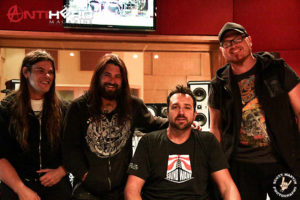 When it comes to pouring that onto record, it is imperative that skill be translated into a means of stimulating the soul. That is exactly the approach Meshiaak takes on their debut album, Alliance of Thieves. In especially breaking through to those immersed in metal’s sheer power and speed, an organic sound must be at the forefront. Indeed, the band utilizes a brand of undoubtedly solid metal, whether it implements thrash or even other alternative textures. Naturally, the outside influences accentuated within the sound ultimately contribute to the album’s outstanding appeal.
When it comes to pouring that onto record, it is imperative that skill be translated into a means of stimulating the soul. That is exactly the approach Meshiaak takes on their debut album, Alliance of Thieves. In especially breaking through to those immersed in metal’s sheer power and speed, an organic sound must be at the forefront. Indeed, the band utilizes a brand of undoubtedly solid metal, whether it implements thrash or even other alternative textures. Naturally, the outside influences accentuated within the sound ultimately contribute to the album’s outstanding appeal.
Consider the opening track, “Chronicles of the Dead.” On the surface, it may play as a ruthless and particularly blistering barrage of instrumental warfare. The extent of that notion came in the intro alone. Wells’ sword-armed lead riff continually commands the track with razor sharp force, enough to drill through the mix to no detriment. Conversely, Camilleri’s seemingly gritty vocal style is surprisingly full of air. Even as different vocal identities were assumed—guttural and spoken call-and-response, hardcore shouts, and soaring bellows—his presence was kept elevated. Of course, Wells showcases masterful—and nonetheless fluid—shredding capabilities on his solo at the 3:26 mark. What triumphs beyond that, though, is the sparsely lulling chord sequence, as well as the combinative harmonic leads of both he and Camilleri in the song’s end. “It Burns At Both Ends” is clever in its execution, withholding that thrash temporarily in favor of crisp, oriental leads on tribal percussion. Don’t be fooled, though. Seemingly without warning, the heaviness returns in all-out brutality. Tomb’s thematic focus of suggestively militant oppression holds equal clout either belted out or when shouted in bursts. The shouted parts take role as the oppressor, while the opposing perspective is representatively sung in harmony. For that reason, the lines “We live endangered lives/We breathe, they multiply/they break into our lives/the war pigs of our time” rings especially poignant in their execution. On the third track, “I Am Among You,” Tomb’s stationary vocal range is introduced, adding a distinctive personality to its atmosphere by way of varying reverberation effects. As the tonality shifts to heaviness, the sense of a higher demonesque power becomes prominent. The first lines “I am the one inside you/Give you all you ever need” plant the impression of false security, while the following lines “I am the voice inside you/Now I bring you to your knees” shows the extent of its dominance. The almost-machine gun like groove of the percussion emits a type of Ministry vibe. Around the 2:15 mark, where a defeatist stance is emphasized, I felt another shift, this time reminiscent of Jerry Cantrell from Alice in Chains. Just three tracks in, and the band exhibits substantial diversity for a sound to be kept organic.
The fourth track, “Drowning, Fading, Falling” was my intro to the band’s music, as well as my reason for checking out the album in the first place. I recall my first time listening to the track, being curious as to where it would fit within an album’s concept. In its placement in relation to the rest of the tracks, it began to make sense. I’d consider this song to inadvertently point that of Metallica’s “Enter Sandman” video—a nightmare consisting of recurring scenarios. The main difference, however, is a sense of dominance and control over otherwise fearful stimuli. For a brief moment, the midpoint of the album (“At the Edge of the World,” “Last Breath“) continues on an especially melodic note. The riffs on “Edge…” are made straight ahead and hook-focused, allowing a smart sense of breathing room for Camilleri’s vocals. I tend to appreciate these kinds of slight deviations. To me, it has nothing to do with maintaining a type of purist credibility, so long as the emotion within the song is captured authentically and sincerely. “Last Breath” still channels traditional thrash sensibilities, albeit with better attention to balancing with the melodic dynamics. Expounded on is the triumphant nature of man over deterring forces, emphasized by the lines “We’ll together and fight/We’re brothers in arms.” Wells’ solos in the 2:50 mark are complementary to that balance, featuring equal amounts of shredding and progressive melodies. The latter part of the album represents a peak in thrash energy, initially driven by “Maniacal.” I’ve gotten a deeper sense of the album’s thematic perspective, which represents patience in all evil reaching plethoric proportions, then, in an interesting twist, becoming obliterated. There’s a killer breakdown in the three-minute mark, held together by thick chugging riffs that punch with every strum. When the drums switch to a mid-tempo, the impact of the snares is especially felt, while mass head banging commences naturally. If that didn’t suffice the first time, it actually returns by way of fade-in, allowing the head banging to continue.
The title track works similarly dynamic and theme-wise, only the presentation is kicked to a whole other level. Its thrash bits are better nuanced with sparsely integrated shout vocals, giving both elements equal space. I liked how the snares hit in a syllabic fashion to match Camilleri’s vocal rhythm. Subtleties like this keep the track from going numb, and although brief, they heighten the stimulation of the listening experience. With subsequent verses, his vocals make a reinvigorated return and extend to the duration of each phrase. The element that feels especially expanded on is the breakdown. Here, harmonic leads come out in waves and set the tone for the buildup to come. The second time around, they blend seamlessly with the harmonized vocals, adding an extra sense of richness to the mix. At this point, Wells’ lead work also exhibits a kind of newfound looseness to it—bolder and fuller, without using as many notes. Whereas the title track was the heaviest, the final track, “Death of Anthem” is the most progressive. The initial bed of lush acoustic guitars resonates well with Camilleri’s bass baritone. On each verse, an electric layer is added as the vocals increase in range. The extent of involvement between each layer is akin to that of the death toll accumulated by war. Victory is not clear cut, but the crispness of the acoustics still echoes through, signifying a resounding hope.
Overall, Alliance of Thieves demonstrates that top-tier musicianship is only one asset of a supergroup. Meshiaak also exhibits strong writing abilities in telling an engaging, cohesive story, and with a message that is sincere. In sticking by their will to produce organic thrash metal, the band actually surpasses expectations on both a stylistic and conceptual level.
[9/10]

